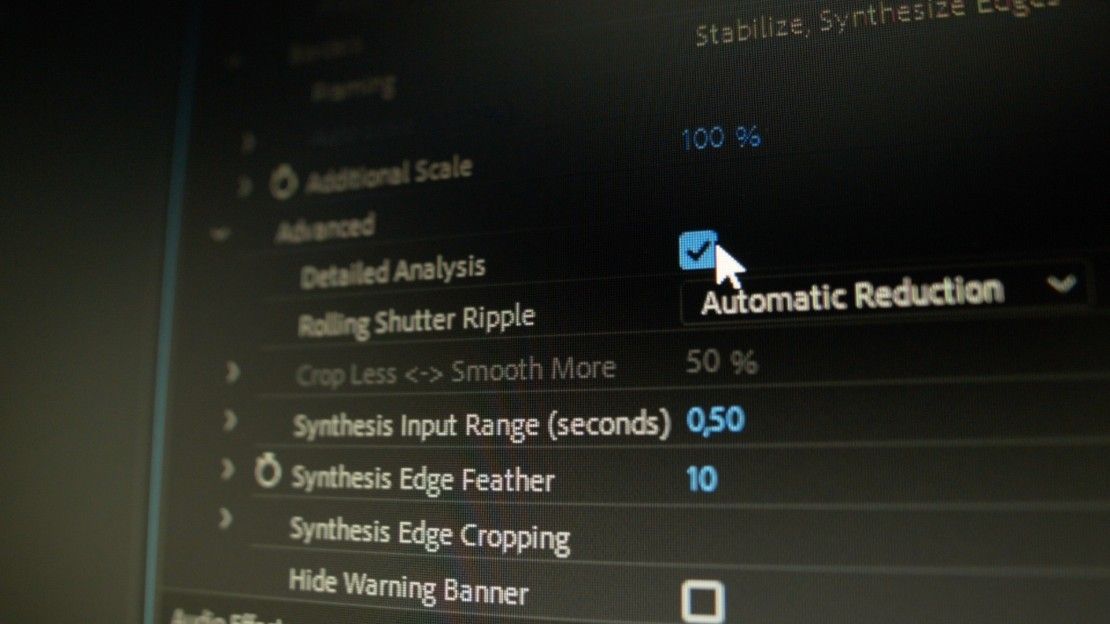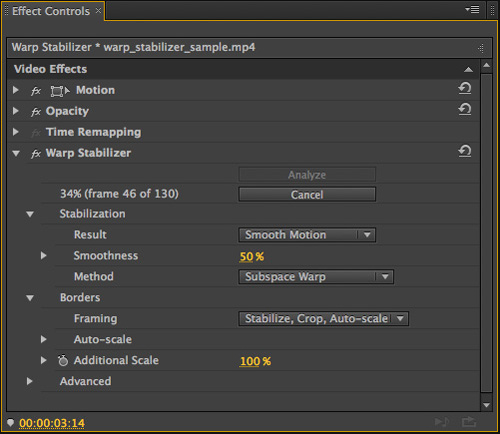
However, like Premiere and After Effects, depending on the shake in your clip, you can select three options to analyze and stabilize your clip. In most circumstances, you can apply default stabilization to the clip, and with one click of the stabilization button, your clip will become smoother. Resolve has always had renowned tracking and stabilization software, but for the past few years, it’s been even better than ever. In Resolve, starting from 14, there is an advanced stabilizer that combines both warping and image translation to remove - or at least minimize - unwanted shake. (Note that in Premiere and After Effects, the stabilization works according to a hierarchy, and it will fall back to the previous process if one stabilization analysis fails to resolve the camera shake.) However, when this overcompensates or when the shake is too violent, you’ll see the footage react with what has been dubbed a “breathing effect.” The warp stabilization consistently moves pixel data to account for camera shake. Subspace Warp (default): Warps the frame to align with other areas of the frame.Perspective: Corner-pins the entire frame and tilts the image forward or backward to eliminate shake.Position, Scale, and Rotation: Stabilization based on the position, the scale, and rotation data.Position: Analyzes the position data of the clip and adjusts the position to emulate a smooth image.In After Effects and Premiere Pro, there are four settings:
WARP STABILIZER SETTINGS SOFTWARE
The methods you choose will alter how the software manipulates the image.

WARP STABILIZER SETTINGS PRO
While the terminology in After Effects and Premiere Pro differs from Da Vinci Resolve, often, the operations are the same.

Before testing the stabilization tool in a variety of different circumstances, we first have understand the array of stabilization settings. However, what is a “steady enough” shot? And which program yields the best results? Let’s put these questions to the test with DaVinci Resolve 15, After Effects, and Premiere Pro.
WARP STABILIZER SETTINGS HOW TO
And if that wasn’t enough, the advancement of software stabilizers has really changed the game.Īs I covered at PremiumBeat in “ How to Make an Impromptu Shot Usable for Your Film,” with a steady enough shot, you can make your footage look like you shot it on a tripod. Today’s advanced stabilization algorithms are outstanding, and combined with improved image resolution and bit depth, it’s far easier to stabilize a shaky shot than it was a decade ago. SoFast-forward a decade from my winter adventure, and consumer-friendly dollies and sliders have become almost obsolete with the introduction of consumer-friendly gimbals and handheld stabilizers. Whether or not the story is good, it will at least feel like a good film. When you first start making films, from a technical standpoint, two things you’ll think will increase your production value are shallow depth of field and smooth motion.

But what if you need to stabilize a shot in Premiere, After Effects, or Resolve? It got the job done it produced a smooth tracking shot.

It was cumbersome, and it couldn’t collapse, so we had to carry around a 9-foot track, and the skateboard wheels often fell off. Need to stabilize some footage? Here’s how to do it in Premiere, After Effects, and Resolve - and which program you should use.įor a few nights in the cold winter of 2008, I spent many hours building the prototype of my DIY dolly and track.


 0 kommentar(er)
0 kommentar(er)
